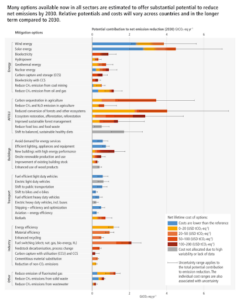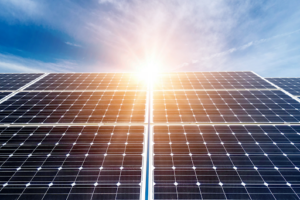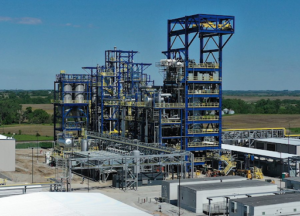This month in the cleantech roundup: new frontiers in corporate buying coalitions, a real mess impacting the US solar industry, new commitments from an old friend of innovative energy technology deployment, and more!
Advance Market Commitments for Carbon Removal: The Next Frontier
Frontier Climate is a new billion dollar effort to support carbon removal companies. Stripe, Alphabet, Shopify, Meta, and McKinsey are collaborating to form one large scale advance market commitment – essentially committing $935 million over the next 10 years to purchase carbon removal from high quality removal projects. This is sort of the opposite of “If you build it, they will come.” This is “We’re good for it, so go ahead and build it.” It’s another example of the corporate buying coalitions we talked about a few months ago, and it’s a pretty sizable one. In the absence of policy, these coalitions can have real impact (and can have a pretty similar purpose as government policy, although not at the same scale).
Stripe, one of the leaders in this space, also enables businesses who use their platform to commit a portion of revenues towards carbon removal. This is, interestingly, a bit different than the typical pitch to purchase offsets to make a company carbon neutral (dedicating 2% of your revenues to carbon removal doesn’t necessarily make you carbon neutral, and I don’t know if the small business even gets the carbon credits in that case), but is very easy to sign up for and the indications are that these funds are being used for high quality potential projects.
There is a debate that crops up on #energytwitter that pits the concept of “early carbon removal investments” against “deploy renewables today.” I find that debate tedious and unproductive- they are quite different, and both useful in their own way. After all, the IPCC was just out with a report talking about how we definitely need carbon dioxide removal technology to actually hit net zero (which will need to be scaled up over the next several decades). That doesn’t mean we shouldn’t be aggressively deploying today: indeed, the same IPCC report also has a great chart that shows the relative potential and cost of using different technologies to reduce carbon emissions over the next decade (including a good number that are, yep, cheaper than the status quo). Indeed, carbon removal (outside of a land use context) isn’t even on the chart because its near term potential is vanishingly small – it’s a long term play.
 Credit: Summary for Policymakers of the Working Group III Contribution to the IPCC Sixth Assessment Report
Credit: Summary for Policymakers of the Working Group III Contribution to the IPCC Sixth Assessment Report
Speaking of funding for carbon removal, Lower Carbon Capital also announced a new $350M fund for carbon removal startups, led by Ryan Orbuch, who joined the fund from Stripe, the aforementioned corporate leader in carbon offset commitments.
Frozen Solar Industry
There’s a strange but serious mess in the solar industry right now. Auxin Solar, a small solar panel manufacturer in California, made a request to the Department of Commerce for an investigation into whether Chinese solar companies are avoiding US tariffs (put in place back in 2012 against China) by moving components through Cambodia, Malaysia, Thailand, and Vietnam (which make up 80% of solar imports to the US today).
 Shield your eyes! Credit: Modernize.com
Shield your eyes! Credit: Modernize.com
Why does that warrant mention? Because of the way the process is designed, there is a potential for retroactive tariffs on solar parts imported from those countries if the Department of Commerce agrees with Auxin. No such evidence has been found to date, per the good New York Times story on the subject, but that hasn’t stopped this move from creating gridlock in the industry. Gigawatts worth of solar projects are being delayed or canceled (because retroactive tariffs would scramble the economics of the projects) – so much so that an Indiana utility is delaying the shutdown of a coal plant by a couple years amidst this uncertainty.
This means a mess for the developers, job losses, and additional barriers to ramping up renewables on the grid more generally.
Will it work out for Auxin? I have no idea; I’d guess that companies would avoid buying from the company out of spite, for how much grief it is causing them. One company that is likely to benefit is Toledo-based First Solar, which is the largest domestic manufacturer. First Solar’s thin-film panels are more expensive than importing crystalline silicon panels from overseas, but that math is reversed if developers have to pay tariffs.
The Loan Guarantee Program is Back
The Department of Energy’s Loan Programs Office is getting back out there – they’ve funded a couple of different projects in the last 6 months, after a years-long gap of funding anything except for some large nuclear projects. The office was very active in the first several years of the Obama administration, but after one of the companies backed by the office went bankrupt in 2011 and elected officials attempted to politicize the program, support for first-of-a-kind technology deployments went into the deep freezer.
In December, the program provided a loan guarantee to expand a first-of-a-kind commercial scale methane pyrolysis plant in Nebraska, which creates what’s known as turquoise hydrogen. The plant uses natural gas as an input (as well as electricity), but produces hydrogen and carbon black (instead of steam methane reforming, which produces hydrogen and CO2).
 Monolith’s existing facility in Nebraska. Credit: Mitsubishi Heavy Industries
Monolith’s existing facility in Nebraska. Credit: Mitsubishi Heavy Industries
More recently, the program announced a commitment for a hundred million dollar loan for Syrah Technologies to expand production capacity to make graphite-based anode materials for EV batteries in Louisiana (a supply chain currently dominated by China). Most of the materials from this Louisiana site will be sent to Tesla.
So, in the first case the program is backing an innovative technology deployment, and in the second case it’s backing the domestic supply chain. Interestingly, even though the graphite processing facility’s technology isn’t unique or innovative, and even though it is owned by a large multinational company, it is still hard for this sort of project to be financed – because it is hard to evaluate how competitive this facility will be over the long term against currently-dominant Chinese suppliers, which make this a good fit for the loan program office.
Other News
This New York Times article explores how manufacturers of heavy duty trucks are split on whether to go battery electric or (hydrogen) fuel cell electric (this is for long haul – everybody seems to agree short haul and medium duty will go battery electric). Link
The American Petroleum Institute (the oil and gas industry trade group) is talking about trying to push a carbon tax in Congress. Link
Last October we talked about how Hertz was making a big move into electric vehicles following its emergence from bankruptcy, committing to buying 100,000 new Tesla Model 3’s (which would make it by far the largest EV rental fleet, and also tie up a solid amount overall production capacity). Recent headlines indicate the company will also buy 65,000 Polestar EVs over the next several years. Pretty good use case for EVs today: easy way for customers to try out an EV; EVs are also a good fit for fleets (the economics improve with higher utilization and they’re lower maintenance). Link
I think we can say that SPACs are officially no longer cool, between impending regulation and the imbalance between quality acquisition targets and blank check vehicles on the market. Link
This is an interesting case study of applying AI to make less carbon-intensive concrete. Link
Techcrunch explores the potential for residential bidirectional EV charging. Link
Low carbon cement startup Brimstone raised $55 million from Breakthrough Energy Ventures and other investors. Link
The New York Times highlights the demonstration funding gap for clean energy businesses, in Europe in this case. Link
As the lithium ion battery supply chain has been stressed and the price of lithium has doubled, there is additional interest in other solutions for grid scale, like sodium ion batteries and Form Energy’s iron air energy storage. Link